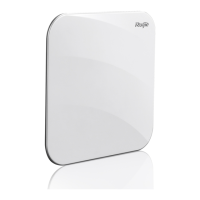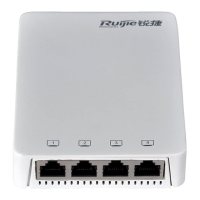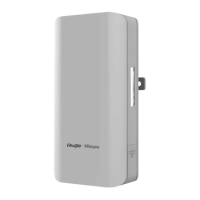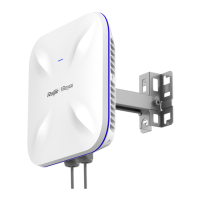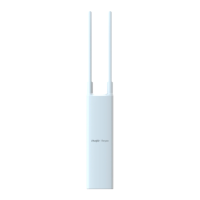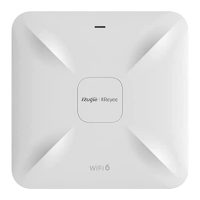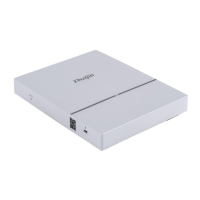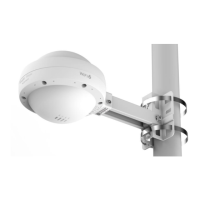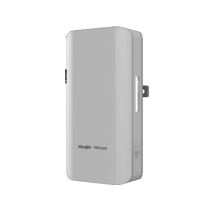Configuration Guide Configuring Band Select
If the AP can receive the Probe Request frame from an STA both at the 2.4 GHz band and the 5 GHz band, this STA
is a dual-band STA.
If the AP can receive the Probe Request frame from this STA only at the 5 GHz band, the AP learns that this STA is
a 5 GHz STA.
If the AP can receive the Probe Request frame from this STA only at the 2.4 GHz band, the AP learns that this AP is
a 2.4 GHz STA.
The AP must wait for a period of time to verify that no Probe Request frame is received at the band; therefore, identifying a
single-band STA is time-consuming but does not affect the normal use by users. Among the three types of STAs, the first
two types are called the dual-band STAs in the Band Select function and the last type is called the inhibition STAs.
It takes a period of waiting time (fixed to 2 seconds) to determine whether a Probe Request frame is sent at the 5
GHz band. Due to different STA drivers, this time is not applicable to all dual-band STAs. Therefore, STA types may
not be correctly identified in the beginning. As long as dual-band STAs can send Probe Request frames at the 5 GHz
band later, the correct STA types can be identified.
STA Information Saving
The STA information identified by a dual-band AP must be saved to provide the basis for subsequent responding policies.
Since Probe Request frames sent by STAs are broadcast packets, an AP may receive many Probe Request frames
generally. It is unnecessary to save all the frames because some distant STAs may not access the AP. Therefore, the
Band Select function saves only the information of STAs that may have access. The selection criterion is the Received
Signal Strength Indication (RSSI) of STAs. Only those whose RSSI exceeds a threshold can access the AP, and only then
does the identified information need to be saved.
STA Information Aging
Users can configure the bands supported by some STAs; therefore, STA type may change during use.
Take an 802.11a/g/n-supported WNIC for example. The WNIC works as a dual-band STA in the beginning. However, a
user disables its 802.11a mode or the support for the 5 GHz channels. Then, the WNIC changes to a single-band 2.4 GHz
STA.
In this case, an aging mechanism needs to be used for the identified STA information. After a period of time, the
previously identified STA information is discarded.
2.3.2 Controlling the Active Scanning Process
After identifying the bands supported by an STA, a dual-band AP can control the active scanning of the STA according to
the STA information. The purpose is to prevent a dual-band STA from discovering 2.4 GHz WLANs and thus lead the
dual-band STA to access the 5 GHz band.
Working Principle
During active scanning, the STA broadcasts a Probe Request frame. After receiving the Probe Request frame, an AP
sends a Probe Response frame immediately to inform the STA of the accessible WLANs on this AP. During active
scanning of a dual-band STA, the STA sends a Probe Request frame and waits for a Probe Response frame on the two
bands. After the Band Select function is enabled, the AP controls the active scanning and adopts different response
approaches according to actual situations.
